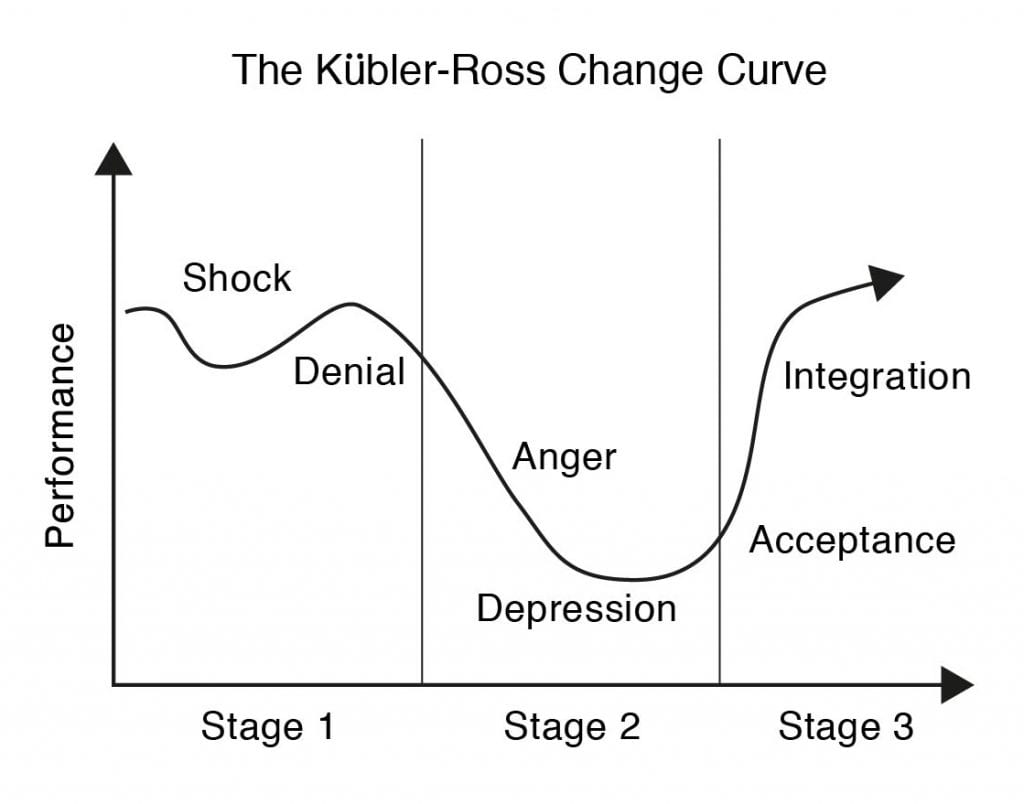“I want a re-do of 2020!” a senior leader said to me recently. After the difficult task of crisis management during the pandemic, trying her best to keep her virtual team engaged, pivoting plans to keep customers engaged, she just found out she was laid off. No fault of hers. The organization is restructuring and laying off people to manage their costs in the wake of declining revenues.
I asked her what she was feeling. Mostly relief she said because things had been tough. “But frankly, my family hasn’t taken this well”, she shared. After a few quiet moments she added “honestly I was hoping to retire from my company. I just want a place to work where I can feel safe and secure”. She admitted that she was still processing the news.
So many of us are yearning for this sense of safety. Yet it feels as elusive as ever. As much as we would like, emotional processing doesn’t have a timetable for ourselves or others. Many of us are tempted to deny our own emotions. Many of us don’t feel equipped to handle emotions in our teams. Yet, learning how to work through our own emotions and those of our team members is the key to leading in times of disruption.
In my new book Wired for Disruption, I talk about the five shifts in agility we need to thrive in the future of work. The first type of agility that is critical for us to learn is what I call Neuro-Emotional Agility. It is the ability to manage our neurobiology and emotions to shift ourselves from states of threat to states of thriving. It’s at the core of our ability to be agile in change. The good news is that these forms of agility are already built into our DNA. We’ve got this. We just need to activate it.
We now know that the best way to work through emotions and learn from them is to actually open ourselves up to feeling them. Trying to think positive thoughts or numb ourselves to emotions are temporary fixes that don’t work. Emotions are a nervous system response to our external circumstances. Our neurobiology evolved to prioritize survival of the species. It needs a level of certainty and control in order to feel safe. When that is missing, it sends threat signals throughout the body. The pace of change and disruption that we have collectively faced in the last few months has many of us feeling exhausted. Unfortunately, while we yearn for a “normal”, disruption is here to stay as many organizations will continue to restructure to survive and meet evolving customer needs. As leaders, we need to become adept at managing disruption-driven emotions in ourselves and others.
Whenever a disruption happens, we go through a type of grieving process that is well-researched. It’s depicted by the Kubler-Ross Change Curve.

In a change process, this curve helps us to grieve the loss of the old. As we integrate the new, we go through various emotional states until we can find acceptance and meaning. Of course, while this curve is directionally correct, for any individual and circumstance it cannot be predictably timed or controlled.
As the events of the last several months have unfolded, we are coming to realize that our schooling and even leadership workshops have left a big gap in our ability to process our own emotional lives. Here are three proven accelerators of neuro-emotional agility I talk about in my book Wired for Disruption. These are not just backed by neuroscience. They are essential tools that my executive coaching clients have used to be agile in ambiguity.
Grow Compassion. This is about pausing to first notice what we’re feeling and practice self-compassion. Self-compassion helps us to accept what we’re feeling and offer kindness to ourselves. This moves us toward greater acceptance of what is happening externally so we can respond with wise action. As we practice self-compassion, we activate the empathic neural network in the brain which helps us adapt to change. Compassion helps us to also be more resilient. Studies on self-compassion show that it helps troops returning from war zones to better process their emotions and adapt to their new circumstances. Studies also have shown that self-compassion allows us to extend our compassion for others. This is critically important to help us lead others who may find it difficult to focus or perform when emotions are high. Compassion helps create a safe space for others to process their emotion and accelerate agility.
Grow Curiosity. When a disruption happens (and we have had several piled in just these last few months), the emotional impact of the disruption is often caused by our mindset. Once we have calmed ourselves in our emotional state, we can start to get curious about our mindset. An exercise that I have created for my executive coaching clients is The Mind Story Map ™. It helps them notice the emotion they are feeling and see that it’s part of a set of beliefs about themselves and others (mindsets) that create certain patterns of behavior and outcome. Once they see their patterns (e.g. “when disruptive change happens, I micro-manage. Wow, I wasn’t aware that I have a need to control”), they are able to make different choices.

This tool also helps us get curious about and explore other peoples’ mindset and experiences without immediately judging them.
Grow Contribution. As emotions are processed and we see our own patterns, we can proactively shift ourselves toward our strengths, energizers and contributions. On the Kubler-Ross Change Curve, this process moves us toward finding meaning and integrating the change in our daily lives. We can find a way to contribute when we focus on what we have to offer and the needs of the stakeholders around us. I call this The Purpose Accelerator ™.

Curious about your own neuro-emotional agility? You can take the Agility Quiz here.
A version of this post first appeared in my Forbes leadership blog.



Its interesting in the work I do with Law enforcement and Military types we are trained to run toward the gunfire . i been seeing a shift as these group come under fire and painted with a broad brush.i wonder how the curve is applicable to this mindset shift?
Hi Anthony – Yes, turning toward gunfire is all about finding meaning (e.g. “my purpose is to protect others, or my purpose is to serve country”. The Kubler Ross curve is about emotions and how once we go through processing them, we can find a way to create meaning of our experience. As we do the self-reflection to find meaning, it helps us accelerate our agility to the disruption or change.
Henna Inam
A great article indeed.
Our awareness of our own emotional state and identifying the emotions (by naming them correctly), and then moving to the next step of analysing whether that emotional state is helpful or having a negative impact on our faculties and emotional health are important steps in the process of emotional navigation and recovery. Mindfulness in this manner helps in allowing us to pull ourselves back up and stand in the face of an adversity, and ultimately make better decisions to steer our lives.
Well said Arif. Thanks for joining the conversation here.
Henna, Thank you so much for attending the virtual WERG session at Cox Communications last week. It was an eye-opening experience, especially for many of us that are/or have suppressed the emotional impact of going from “office work and socializing” to “work from home and social distancing”.
Hi Manita –
Thank you. It was such an inspiring experience for me as well – to be with 600+ Cox leaders and see the real impact of creating a safe space for listening and sharing what is challenging. I hope you will use the tools in your work and home life and that they will continue to enable you and those on your team to replenish and be your best selves at work.
Henna Inam